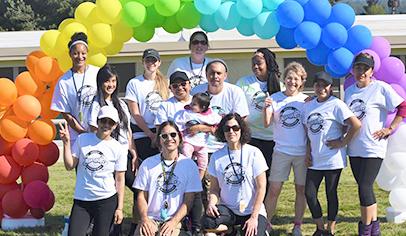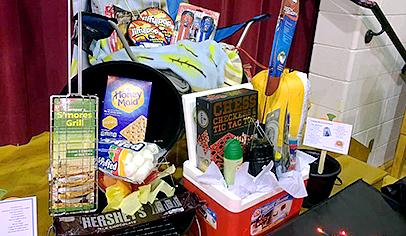At PTO Today, we talk to school parent groups every single day. We hear about the common struggles as well as the creative solutions, plus we get an up-close look at the most productive, positive groups across the country. So we put our heads together to figure out what successful groups have in common and identified these key six traits.
If your own group is struggling, don’t be discouraged; just pick one area to focus on, start with small steps, and over time your successes will start building on themselves!
 Successful groups are outgoing, approachable, and fun
Successful groups are outgoing, approachable, and fun
It shows when involved parents are enjoying themselves; they are high-energy, with a positive outlook and a focus on being inclusive. Leaders are willing to answer questions and jump in to connect with anyone who might feel a little lost. Most of all, they ask for input and new ideas and respond positively when they get it! “The best groups have multiple ways to communicate, make sign-up and volunteering easy, and have a range of volunteer opportunities that fit different schedules and commitment levels,” says operations manager Brian Donovan.
Make it work for you: At events, talk to parents who are not board members or power volunteers (without asking them to volunteer). Wear name tags, and always speak positively about other parents and volunteers.
 Successful groups are well-organized
Successful groups are well-organized
Strong bylaws, a board that works well together, and a detailed transition plan all make it possible for a parent group to operate as an entity independent from the school. With a clear organizational structure, leaders can work to support the group’s mission in a way that’s respectful of everyone involved—and helps prevent volunteer burnout. “The groups that are on top of things tend to have checklists that they run down at the end of the year so that the new board members don’t have to reinvent the wheel,” observes Nina Lovinger from the leader support team. “The new board can hit the ground running with confidence.”
Make it work for you: Spend time on your mission statement and share it widely with the parent community. Review bylaws and standing rules each year so that they help in getting PTO work done as efficiently as possible.
 Successful groups have good communication
Successful groups have good communication
Openly talking about the many ways a PTO supports the school and the wider community builds a group’s reputation and elevates its status among families. Success breeds good feeling, so talking widely about accomplishments—at meetings, on social media, and around town—will make it easier to increase involvement. “The more you communicate about why things are being done, the more there is a feeling of being a part of the group,” says Holly Wheeler of the operations department.
Make it work for you: Plan out your group’s communications on a calendar. Start by filling in meeting dates and planned events so you can post reminders, agendas, and parent forms in advance. On slow weeks, post fundraising updates and volunteer appreciation shout-outs.
 Successful groups have activities that support the community
Successful groups have activities that support the community
When a group has a varied calendar of events that’s been put together thoughtfully, it shows in the high levels of participation across the board. Fundraisers bring in money while also generating awareness of the group, community service efforts support families in need, and enough just plain fun events are planned to build spirit schoolwide. “Really special groups take a step back and think about what they can do above and beyond the normal group events to help solve a specific problem at the school or in the community,” notes digital media manager Shannon Soares.
Make it work for you: Survey parents to find out what events they’d like to attend, what topics they want to learn more about, and what particular issues they’re struggling with.
 Successful groups are connected to the principal and teachers
Successful groups are connected to the principal and teachers
Support for the principal and members of the teaching staff goes beyond expressions of appreciation. Learning what their challenges and goals are and working in tandem to create a plan for the year build a level of loyalty and trust while allowing the PTO to maintain its independence. “When there is true mutual respect, groups and staff can function as a team and accomplish a great deal on behalf of the students and school community,” says community manager Rose Hamilton.
Make it work for you: Share your plans for the year with the principal and ask whether there are schoolwide goals that the PTO can support. Make serving teachers a central part of your activities; welcome their participation in volunteer efforts but don’t require that time from them.
 Successful groups are focused on appreciation
Successful groups are focused on appreciation
Asking for help is the best way to get it; saying thank-you is the best way to get it again. It’s also the surest way to avoid being labeled a clique—people aren’t likely to feel left out or ignored when they are thanked personally and specifically for the work they did (“Thanks for passing out water at the fun run,” for example). “Everyone wants to be (and should be) recognized for contributions to the school and PTO,” Rose says. “Great groups regularly thank people in a variety of ways—and I think it matters that they sincerely are grateful for the help.”
Make it work for you: Ask someone to be the thank-you chairperson and send out a handful of brief notes each week. Or make it a leadership bonding experience by taking five minutes at the beginning of each board meeting to have each officer write a few.

























